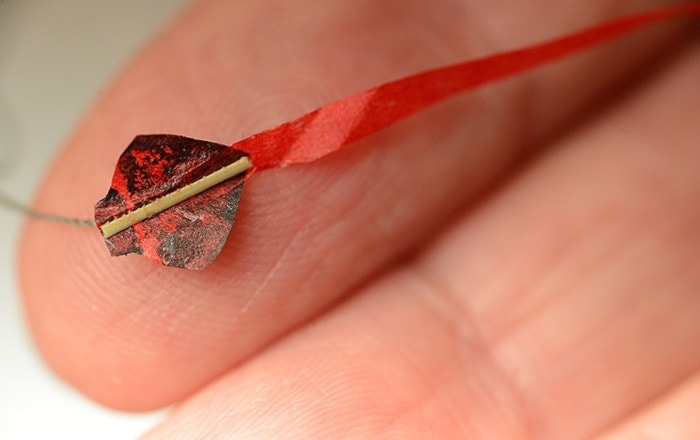Mary-Lynn Schlifer once got in “a whole heap of trouble” for her kites.
It was 1991, and she had just started teaching a group of kids how to make kites at a summer school in Toronto when an inspector from the school board walked in and saw the materials: Canadian flags in pieces among the sewing machines.
The politically incorrect no-no was her first lesson in the world of kites (apart from what she toyed with as a kid), and for the next 20 years, she would evolve into a string sensei, a master in a world of fabric, thread, wood and wind.
She even got her Masters degree in sociology a few years later with a thesis titled “Crossing Cultures with Kites.”
Schlifer, semi-retired but still a tutor of “regular” subjects for kindergarten to university students, is an encyclopedia on the world of kites.

Working at home in Guildford, she shares a few facts with a visitor:
• In Thailand, a pakpao (male kite) venturing out into chula (female kite) territory is any female’s game, and vice versa.
• Pergamon paper is used for Southeast-Asian “wau bulan” kites, which take about 100 hours to make. They’re named after the sound they make in flight: “Wow-oo”.
• Linen thread is stronger than cotton, and it’s tested for strength against wind as well as the weight of the kite.
• Any materials can be used, including mylar, rip-stock nylon (her favourite) and even tissue paper. Fabric should be cut with the grain or it won’t fly right, she adds.
• Most countries have some kind of kite tradition – with particularly long and cultured kite histories in China, Japan and India. (In Samoa, according to legend, only kings were allowed to fly kites.)
Over the last two decades in Ontario (where she lived for years), B.C. and the U.S., Schlifer took part in dozens of kite festivals and taught numerous workshops, often focusing on the theme of birds and flying insects.
(Anything flying is game for her crafting and personal activities: Bat displays, paper airplanes, even learning to fly a Cessna.)
Below: Mary-Lynn Schlifer (in red) recently held a kite-making workshop at Cloverdale Country Farms.

Schlifer, who was born in Crescent Beach, says she grew up with songbirds and feels kites are a way to connect with nature.
“My father and mother both taught me to have a strong interest in the world – in nature in particular.”
She says the magic is akin to a phrase uttered by a kite-maker she once met in New York City: “Communicating with the heavens.”
Schlifer took a bit of a break from kites after her husband died two years ago.
“We have dips and swings in our lives,” she notes.
But like the a kite, she’s felt the surge of the wind, and was back recently teaching a kids to make insect-shaped kites at a workshop in Cloverdale.
In August, Schlifer won first place in the Miniature Masters category at the 32nd-annual Washington State International Kite Festival.
Her kite, properly tailed and in flying condition, was half a centimetre wide. The ribbon she won was about 20 times wider.
Mary-Lynn Schlifer is seeking people, groups or schools interested in learning to build kites. She can be contacted by phone at 604-582-5483 or by email at mlschlifer@gmail.com
bjoseph@surreyleader.com
